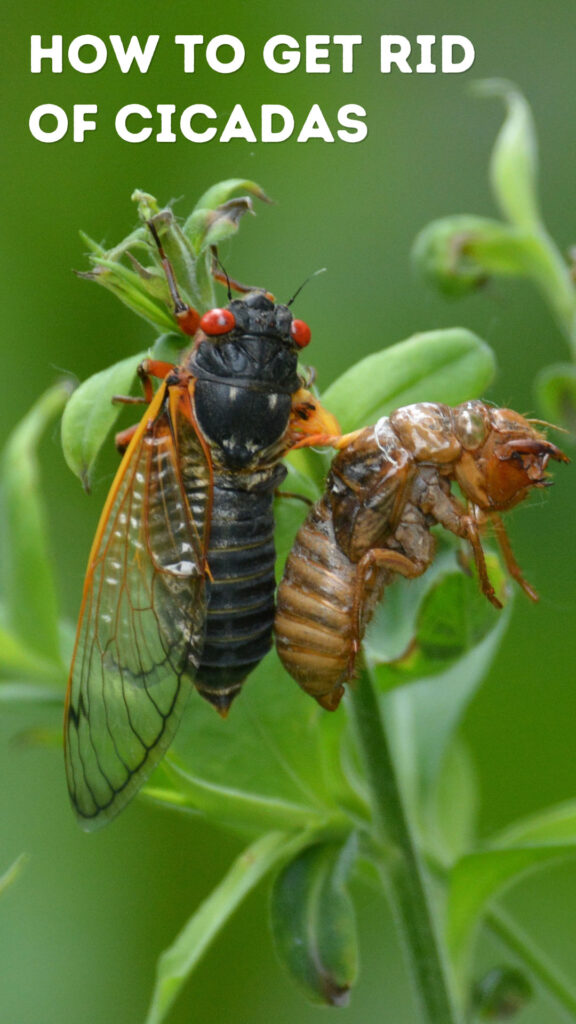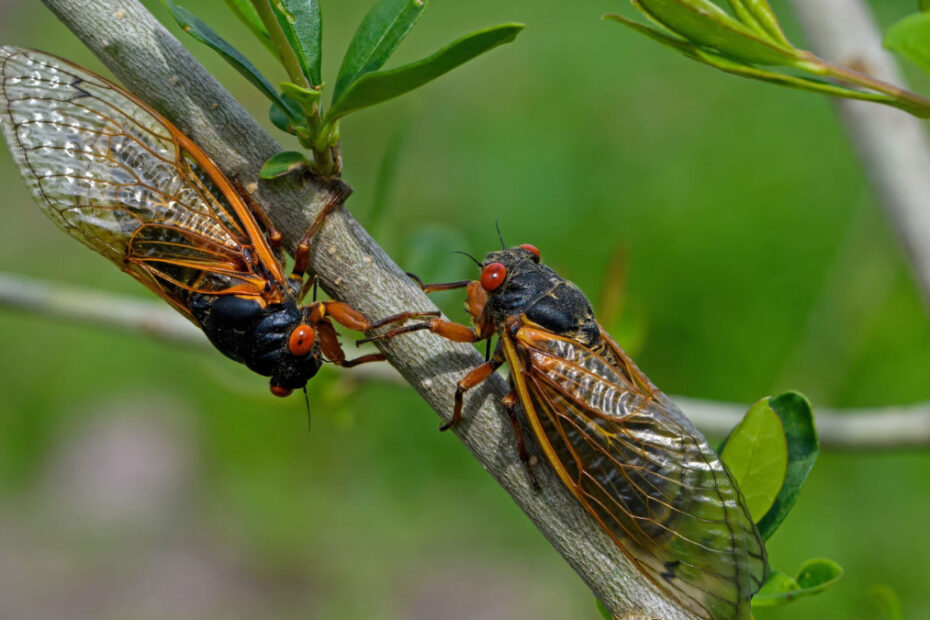Cicadas can turn a peaceful summer evening into a noisy ordeal with their relentless buzzing. While these insects play a crucial role in the ecosystem, their presence can become overwhelming, especially during peak seasons. If you’re tired of the constant racket and the damage they can cause to young trees and shrubs, it’s time to take action.
In this guide, you’ll discover effective strategies to manage and reduce cicada populations around your home. From natural deterrents to practical tips for protecting your garden, we’ve got you covered. Say goodbye to sleepless nights and hello to a quieter, more serene outdoor space.
Key Takeaways
- Understand Cicada Behavior: Cicadas have unique life cycles and behaviors, such as loud mating calls and feeding on tree roots, which can help in managing their presence effectively.
- Identify Infestation Signs: Look for visual indicators like exoskeletons, egg-laying scars, and nymph holes, as well as the distinctive mating songs and choruses of male cicadas.
- Natural Control Methods: Use predators and parasites, such as birds and mammals, and habitat modifications like pruning trees and ground maintenance, to manage cicada populations sustainably.
- Effective Chemical Control: Apply contact or systemic insecticides, following safety guidelines, to target cicada infestations when natural methods are inadequate.
- Prevent Future Infestations: Consistently maintain your yard and choose appropriate plants to create an environment less conducive to cicada infestations, minimizing long-term impacts.

Understanding Cicadas
Understanding cicadas helps to manage their presence effectively. These insects, known for their loud mating calls, have unique life cycles and behaviors.
Life Cycle
Defined by their developmental stages, cicadas have complex life cycles. Here’s a breakdown:
- Egg: Female cicadas lay eggs in tree branches.
- Nymph: After hatching, nymphs drop to the ground, burrow, and feed on tree roots.
- Adult: Nymphs emerge as adults to mate and lay eggs.
Types of Cicadas
Several types of cicadas exist, categorized mainly by their life cycles:
- Annual Cicadas: These cicadas emerge every year, usually in smaller numbers.
- Periodical Cicadas: Emerging in cycles of 13 or 17 years, periodical cicadas appear in massive numbers.
Behavior
Cicadas display specific behaviors that can be disruptive:
- Mating Calls: Males produce loud calls to attract females.
- Feeding: Nymphs feed on tree roots, while adults consume plant fluids.
- Emergence: In large numbers, cicadas can overwhelm an area.
Ecological Importance
Even though the inconvenience, cicadas benefit ecosystems:
- Soil Aeration: Cicada nymphs aerate the soil while burrowing.
- Nutrient Cycle: Decomposed cicadas add nutrients to the soil.
Understanding these aspects enables informed strategies to manage cicadas effectively in your environment.
Signs of Cicada Infestation
Recognizing a cicada infestation quickly helps manage their impact on your environment. Look for visual and sound indicators to identify their presence.
Visual Indicators
Finding cicadas often starts with your eyes. Look for these visual clues:
- Exoskeletons: Cicadas shed their skins as nymphs mature into adults. Find these empty exoskeletons on trees, plants, and buildings.
- Egg-laying Scars: Female cicadas cut slits in tree branches to lay eggs, leaving visible scars. Check for these scars on twigs and small branches.
- Nymph Holes: As cicada nymphs emerge from the ground, they leave behind small holes. Notice these holes in the soil around tree bases.
Sound Indicators
The sounds of cicadas are unmistakable and revealing. Listen for these auditory signs:
- Male Mating Songs: Male cicadas produce loud, buzzing calls to attract females, particularly during warm, sunny days.
- Choruses: In heavy infestations, groups of cicadas create overlapping choruses. This sound can be overwhelming and continuous from morning until night.
- Frequency Modulation: Cicada songs vary in pitch and rhythm. Notice changes in their songs which may indicate different species or phases of their activities.
By identifying these signs, you can take early action to control cicada populations and protect your garden and trees from damage. Use this knowledge to stay vigilant and proactive in your pest management efforts.
Natural Methods for Cicada Control
Natural methods provide effective and environmentally friendly ways to manage cicada populations. These strategies minimize harm to beneficial insects, plants, and the overall ecosystem.
Predators and Parasites
Encouraging natural predators and parasites can help control cicadas. Certain birds, animals, and insects feed on cicadas, reducing their numbers naturally.
Key Predators and Parasites:
- Birds: Species such as crows, blue jays, and sparrows consume adult cicadas.
- Mammals: Squirrels, raccoons, and bats eat cicadas, especially nymphs emerging from the soil.
- Insects: Certain wasps and beetles prey on cicada nymphs.
You can attract these predators to your yard by:
- Planting native trees and shrubs.
- Providing water sources like birdbaths.
- Installing bird feeders to attract insect-eating birds.
Habitat Modification
Altering the habitat around your home can make it less attractive to cicadas. Simple modifications deter them from laying eggs and emerging in large numbers.
Methods for Habitat Modification:
- Prune Trees: Trim branches and shrubs to reduce potential nesting sites.
- Ground Maintenance: Remove dead leaves and debris to decrease suitable sites for nymphs to emerge.
- Tree Wrapping: Use fine mesh netting around tree trunks to prevent nymphs from climbing and reaching the branches.
Implementing these natural methods helps maintain a balanced ecosystem while managing cicada populations effectively.
Chemical Methods for Cicada Control
Chemical methods effectively manage cicada infestations when natural methods aren’t sufficient. These techniques offer targeted control to reduce cicada populations in affected areas.
Insecticides and Pesticides
Using insecticides and pesticides can help control cicada populations. Specific types of insecticides are designed to target cicadas without harming other beneficial insects.
Key Types of Insecticides:
- Contact Insecticides: These kill cicadas upon direct contact. Examples include bifenthrin and carbaryl.
- Systemic Insecticides: These are absorbed by plants, making cicadas ingest the toxic substance when feeding. Examples include imidacloprid and dinotefuran.
Steps for Application:
- Identify Infested Areas: Look for signs of cicada presence such as exoskeletons and egg-laying scars.
- Choose Appropriate Insecticide: Select one based on the specific needs of your environment and the type of plants affected.
- Follow Manufacturer Guidelines: Ensure proper dosage and application techniques to maximize effectiveness.
- Apply During Appropriate Seasons: Use insecticides at times when cicada activity is highest, usually late spring to early summer.
Safety Precautions
When using chemical methods, itâs important to prioritize safety to protect yourself, others, and the environment.
- Wear Protective Gear: Use gloves, masks, and eye protection to avoid direct contact with chemicals.
- Read Labels Carefully: Follow all instructions and warnings to ensure safe usage.
- Avoid Beneficial Insects: Apply insecticides in a targeted manner to minimize impact on non-target species like bees and butterflies.
- Store Chemicals Safely: Keep insecticides in a secure location away from children and pets.
- Environmental Considerations: Avoid overuse to prevent soil and water contamination.
Chemical methods offer a controlled approach to manage cicada populations, but it’s crucial to balance effectiveness with safety and environmental care.
Preventing Future Infestations
Keeping cicadas at bay involves a long-term approach that integrates regular yard maintenance and strategic plant selection. Implementing these steps will help create an environment less prone to future infestations.
Yard Maintenance Tips
Maintain your yard to deter cicadas from finding suitable places to lay eggs and develop.
- Regular Pruning: Trim trees and shrubs to remove dead branches and keep plant growth healthy. This makes it harder for cicadas to find spots for egg-laying.
- Clean Ground: Keep the yard clean from fallen leaves, branches, and other debris to reduce hiding spots for nymphs.
- Tree Wrapping: Wrap trunks of young trees with netting material during cicada mating seasons to prevent females from laying eggs in the bark.
- Water Sources: Avoid leaving standing water, which attracts not only cicadas but other pests. Ensure good drainage around your garden.
Plant Selection
Choose plants that are less attractive to cicadas to naturally reduce their population.
- Native Plants: Opt for native species, as they are more resistant to local pests and diseases, including cicadas.
- Hardwood Trees: Prefer hardwood trees like oak and maple over young, vulnerable trees. Hardwood trees can better withstand cicada activity.
- Mixed Planting: Diversify plant types in your garden to minimize the impact of cicadas on any single species.
By consistently applying these yard maintenance and plant selection strategies, you can significantly reduce the likelihood of future cicada infestations.
Conclusion
Dealing with cicadas can be a challenge, but with the right strategies, you can manage their presence effectively. By understanding their life cycle and behaviors, you’re better equipped to recognize early signs of infestation and take proactive steps.
Natural methods, such as attracting predators and modifying habitats, help maintain a balanced ecosystem while reducing cicada numbers. When necessary, chemical methods can provide additional control, but always prioritize safety and environmental impact.
Consistent yard maintenance and strategic plant selection are key to preventing future infestations. By applying these insights, you can enjoy a quieter and healthier outdoor environment.
Frequently Asked Questions
What are cicadas and why are they noisy?
Cicadas are insects known for their loud mating calls, which males produce by vibrating membranes on their abdomens. The noise is primarily to attract females for mating.
Are cicadas harmful to plants and trees?
Cicadas can harm young trees and shrubs by laying eggs in their branches, leading to scarring and weakened structures. However, they pose minimal threat to well-established plants.
How can I identify signs of a cicada infestation?
Look for visual indicators like exoskeletons, egg-laying scars, and nymph holes. Auditory signs include loud male mating songs, especially during heavy infestations.
What natural methods exist for controlling cicada populations?
Natural methods include attracting predators such as birds and mammals, pruning trees, maintaining clean grounds, and wrapping tree trunks to deter egg-laying.
Are there chemical methods for cicada control?
Yes, insecticides and pesticides can be used. Contact and systemic insecticides are effective, but safety precautions and environmental impact should be considered.
How do I ensure safe application of insecticides?
Wear protective gear, read labels carefully, and minimize impact on beneficial insects. Follow the instructions precisely for effective and safe use.
Can I prevent future cicada infestations?
Yes, by maintaining your yard through regular pruning, cleaning, and ensuring good drainage. Planting native species and hardwood trees also helps reduce cicada attraction.
What is the ecological importance of cicadas?
Cicadas play a vital role in ecosystems by aerating the soil and contributing to the nutrient cycle, which supports overall ecological health.
Do cicadas have unique life cycles?
Cicadas have a unique life cycle that includes egg, nymph, and adult stages. They can be annual or periodical, emerging every 13 or 17 years.
What strategies can protect gardens from cicadas?
Use natural deterrents like tree wrapping, maintain cleanliness, and attract natural predators. Avoid standing water and ensure good yard drainage to discourage cicadas.
